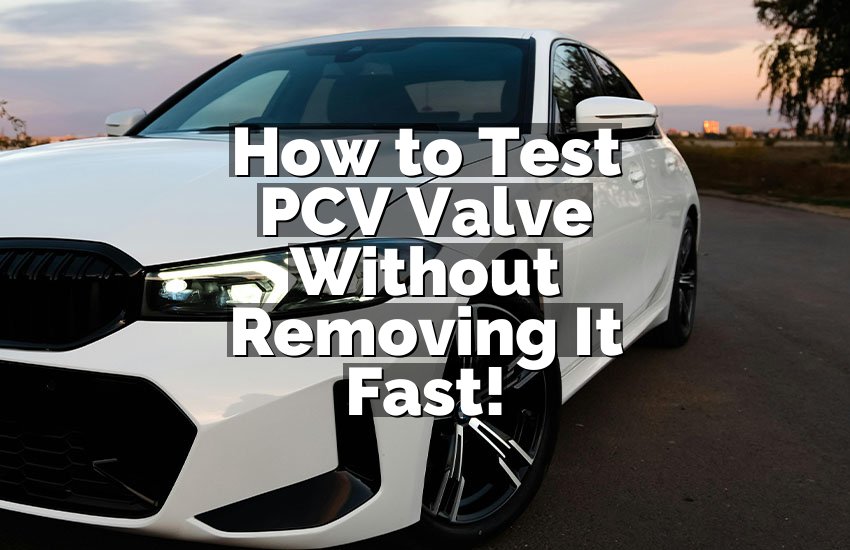You might notice that your car’s engine is revving high even when it’s just idling. This can be pretty annoying and might even worry you. But don’t stress! In this blog post, we’ll break down why your engine could be running at high RPMs and show you some easy ways to fix it. Whether it’s a small issue or something a bit more serious, we’ve got simple tips to help you get things running smoothly again. Let’s dive in!
Common Causes
- Vacuum Leak: A vacuum leak can let extra air into the engine, causing high RPM. Check hoses and gaskets for any cracks or loose connections.
- Idle Air Control Valve (IAC) Issues: The IAC valve controls the engine’s idle speed. If it’s faulty or dirty, it may cause high RPM. Cleaning or replacing the IAC valve might solve the issue.
- Throttle Body Problems: Dirt or debris in the throttle body can affect the idle speed. Clean the throttle body to see if it helps.
- Faulty Sensors: Sensors like the Mass Air Flow (MAF) sensor or the Engine Coolant Temperature (ECT) sensor can affect idle speed if they’re not working properly.
- Sticking Throttle: If the throttle is sticking or not returning to its normal position, it can cause high RPM. Check and clean the throttle linkage.
How to Fix High RPM at IDLE

1. Check the Idle Air Control Valve (IAC)
The Idle Air Control Valve (IAC) helps manage how much air flows into your engine when it is idling. When the engine is not getting the right amount of air, it can cause the RPM to go too high. To check this, first, find where the IAC valve is located. It’s usually attached to the throttle body. Once you find it, you’ll want to clean it.
You can use a special cleaner made for the IAC valve. Spray it on the valve, then wipe away any dirt or carbon buildup. After cleaning, put the valve back in place and start your car. If the RPM is still high, you might need to replace the IAC valve. If you’re not sure how to replace it, ask a mechanic for help.
2. Inspect the Throttle Body
The throttle body controls how much air goes into your engine when you are idling. If it’s dirty or clogged, it can make your RPM go too high. To inspect it, you need to find where the throttle body is located. It’s usually connected to the intake manifold. Open it up and look inside. If you see a lot of dirt or carbon, you need to clean it.
Use a throttle body cleaner and spray it inside. After spraying, use a clean cloth to wipe away any buildup. Make sure you get all the dirt out. Once it’s clean, put it back together and start your car. If the RPM is still high, you might need to replace the throttle body. If you’re not comfortable doing this, it’s best to get a mechanic to help.
3. Examine the Vacuum Hoses
Vacuum hoses are rubber tubes that carry air and vacuum around your engine. If these hoses are damaged or leaking, it can make your RPM go up too high. To check them, look at all the rubber hoses connected to your engine. Check for any cracks, holes, or signs of wear and tear. If you find any damaged hoses, you need to replace them.
It’s a good idea to get new hoses that are the same size and type as the old ones. Simply remove the old hose and put the new one in its place. Make sure the new hose is fitted securely and not leaking. Once you’ve replaced any damaged hoses, start your car and see if the RPM has gone down.
4. Check for a Dirty Air Filter
The air filter in your car keeps dirt and debris out of the engine. If it gets too dirty or clogged, it can cause high RPMs when idling. To check the air filter, find where it’s located—usually, it’s in a box near the engine. Open the box and take out the filter. Hold it up to the light.
If you can’t see light through the filter because it’s too dirty, it’s time to replace it. A clean filter will let the right amount of air flow into your engine. Get a new filter that matches the old one and put it in place. Close the box and start your car. If the RPMs are still high, the air filter might not be the issue, and you might need to look at other things.
5. Test the Coolant Temperature Sensor
The coolant temperature sensor measures how hot your engine is and helps adjust the idle speed. If this sensor is not working right, it can make your RPMs go too high. To test it, you’ll need an OBD-II scanner, which is a tool that checks engine sensors. Plug the scanner into your car’s diagnostic port and check the readings from the sensor.
If the readings are incorrect or show that the sensor is faulty, you may need to replace it. To replace it, find where the sensor is located—usually near the radiator or on the engine. Remove the old sensor and put in the new one. After replacing it, use the scanner to make sure the new sensor is working properly. Start your car to see if the RPM has improved.
6. Inspect the Engine Control Unit (ECU)
The Engine Control Unit (ECU) is the brain of your car’s engine. It controls how the engine runs and can affect the RPM when idling. If the ECU is not working right, it can cause high RPMs. To inspect the ECU, you might need to visit a professional because it involves complex testing. A mechanic will use special tools to check if the ECU is functioning properly.
Sometimes, the ECU needs to be reprogrammed or updated to fix the problem. If the ECU is faulty, it may need to be replaced. This is a more technical job, so if you’re not experienced, it’s best to have a mechanic handle it. Once the ECU is working correctly, your car’s idle RPM should return to normal.
7. Verify the Idle Speed Adjustment
Some cars have a screw or setting that controls the idle speed. If this setting is not correct, it can cause your RPM to be too high. To check this, find the idle speed adjustment screw on your car’s throttle body. It may be labeled or shown in your car’s manual. Use a screwdriver to turn the screw.
Turning it clockwise usually lowers the idle speed, and turning it counterclockwise raises it. Make small adjustments and check the RPM each time. Once you find the right setting, make sure the screw is tightened securely. After adjusting, start your car and see if the RPM is at the correct level. If you’re unsure about making these adjustments, you can always ask a mechanic for help.
8. Look for Other Engine Issues
If none of the previous steps fix the high RPM problem, there might be other engine issues causing it. Problems like a misfiring engine, a faulty fuel system, or other issues can affect the idle speed. If you’ve checked everything and the RPM is still high, it’s best to have a mechanic look at your car. They can perform a thorough diagnostic to find any hidden problems.
A mechanic will use special tools to check different parts of the engine and identify what might be causing the issue. Once they find the problem, they can recommend the right repairs or replacements. Taking your car to a professional can help ensure that the problem is fixed properly.
I hope these tips help you fix the high RPM problem with your car. If you try these steps and still have trouble, it might be best to see a mechanic. They can help find and fix any issues your car might have. Keeping your car in good shape can help it run smoothly and save you from bigger problems.
Are These Questions in Your Mind?
Is it normal for the RPM to fluctuate at idle?
No, it’s not normal for the RPM to fluctuate at idle. It should stay steady. Fluctuations can indicate issues with the engine or idle control systems.
Can a bad fuel filter cause high RPM at idle?
Yes, a clogged fuel filter can affect engine performance, including causing high RPMs. It restricts fuel flow and may cause erratic idling.
Do I need to reset the ECU after cleaning the throttle body?
In most cases, resetting the ECU isn’t required after cleaning the throttle body. However, it can help if the idle issue persists. You can do this by disconnecting the battery for a few minutes.
Is it safe to drive with high RPM at idle?
Driving with high RPM at idle is generally safe in short terms, but it’s not ideal. It can lead to engine wear or other issues if not addressed.
Can a dirty fuel injector affect idle RPM?
Yes, dirty fuel injectors can cause poor engine performance and high idle RPM. Cleaning or replacing them can help improve the idle speed.
Do I need special tools to check the idle air control valve?
You don’t need many special tools to check the idle air control valve. Basic tools like a screwdriver and cleaner are usually enough for cleaning and inspection.
Is it possible to fix high idle RPM without professional help?
Yes, many high idle RPM issues can be fixed with basic tools and knowledge. However, if the problem persists or is too complex, seeking professional help might be necessary.
Can a worn-out spark plug affect idle RPM?
Yes, worn-out spark plugs can lead to rough idling and high RPM. Replacing spark plugs is a simple maintenance task that can improve engine performance.
Do I have to replace the entire throttle body if it’s dirty?
Not always. Cleaning the throttle body is often enough. If cleaning doesn’t fix the problem, then you might need to replace it.
Is it okay to use aftermarket parts for idle control?
Using aftermarket parts for idle control is generally okay, but make sure they are high quality and compatible with your car. Sometimes, original parts are more reliable.


